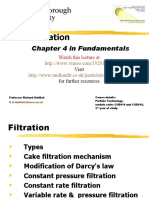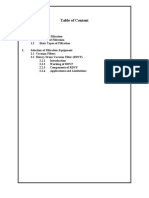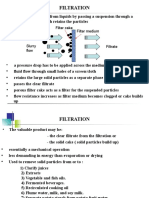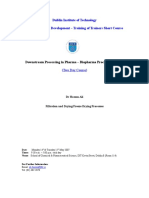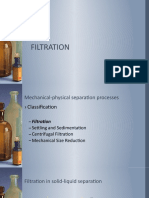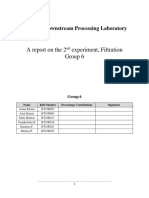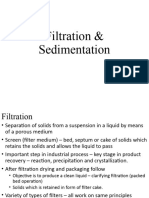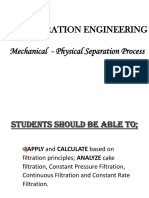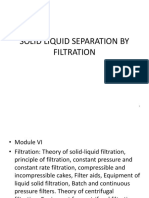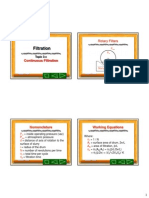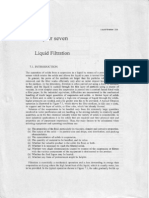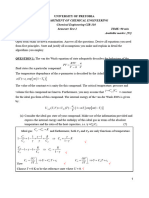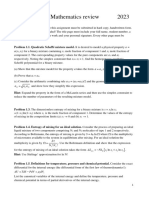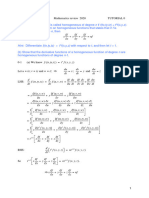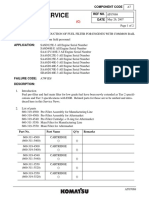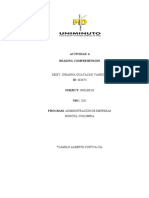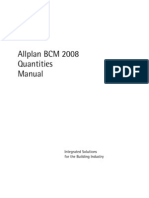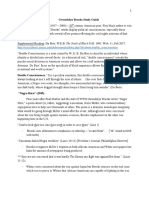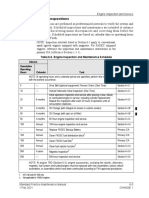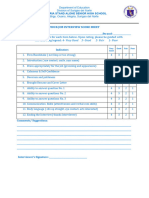0% found this document useful (0 votes)
48 views24 pages08 Filtration Lecture
The document discusses solid-liquid filtration processes, detailing the mathematical relationships involved in filtration, including the Ergun and Darcy equations. It covers various filtration methods such as constant pressure and constant filtration rate, as well as specific equipment like plate and frame filters and rotary drum filters. Key parameters such as pressure drop, filtration area, and specific cake resistance are defined and related to the filtration process.
Uploaded by
u21589969Copyright
© © All Rights Reserved
We take content rights seriously. If you suspect this is your content, claim it here.
Available Formats
Download as PDF, TXT or read online on Scribd
0% found this document useful (0 votes)
48 views24 pages08 Filtration Lecture
The document discusses solid-liquid filtration processes, detailing the mathematical relationships involved in filtration, including the Ergun and Darcy equations. It covers various filtration methods such as constant pressure and constant filtration rate, as well as specific equipment like plate and frame filters and rotary drum filters. Key parameters such as pressure drop, filtration area, and specific cake resistance are defined and related to the filtration process.
Uploaded by
u21589969Copyright
© © All Rights Reserved
We take content rights seriously. If you suspect this is your content, claim it here.
Available Formats
Download as PDF, TXT or read online on Scribd
/ 24




